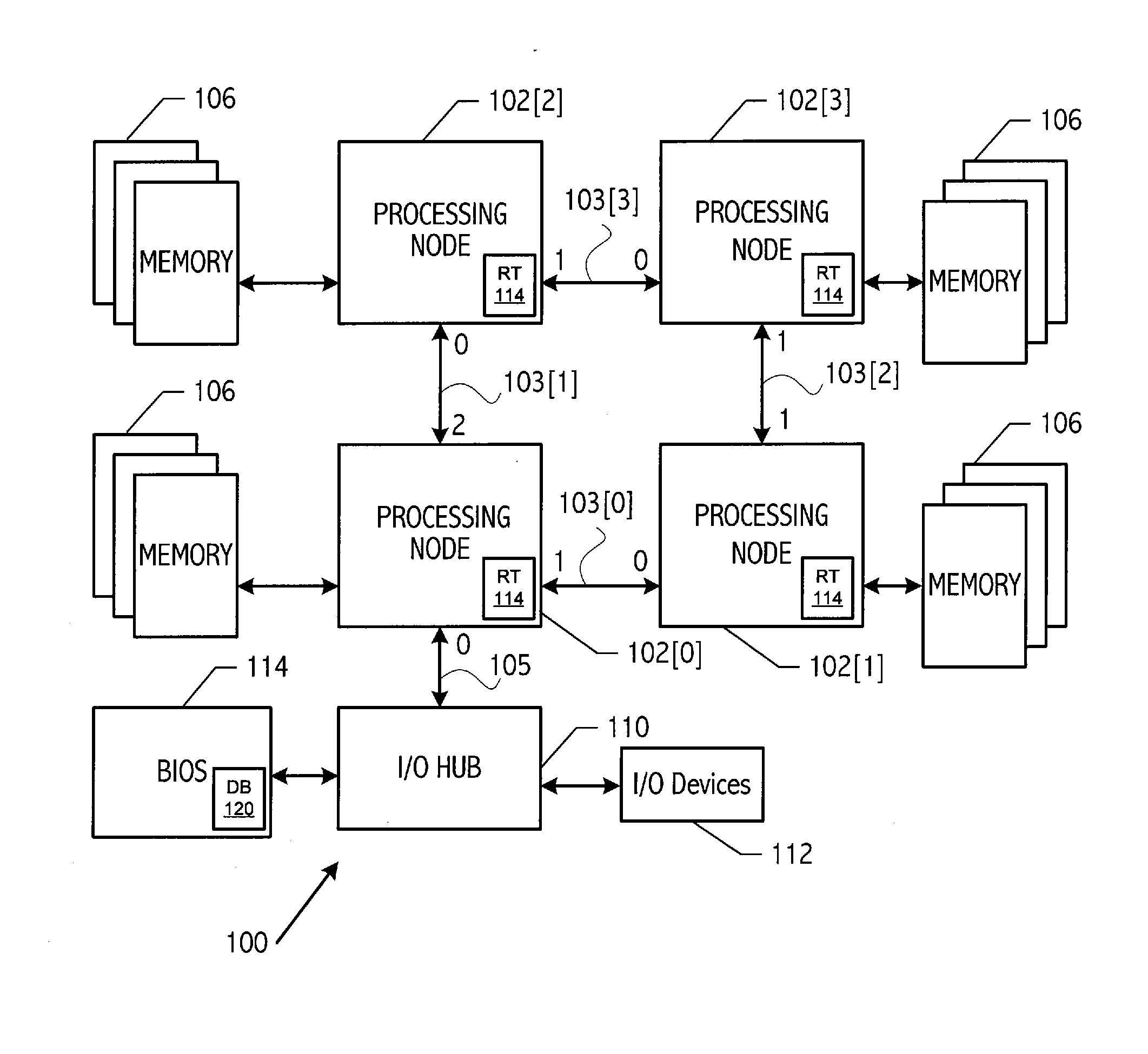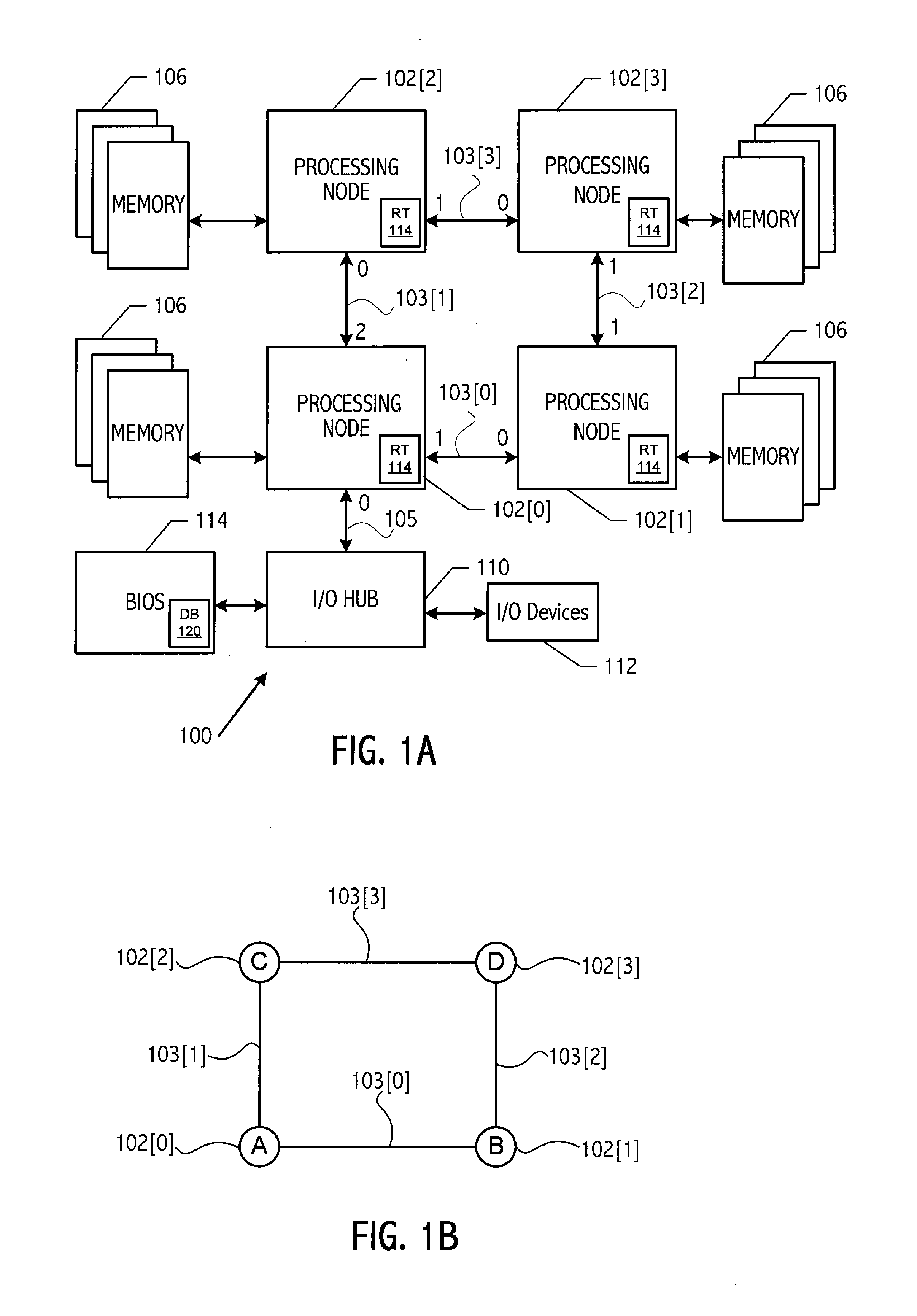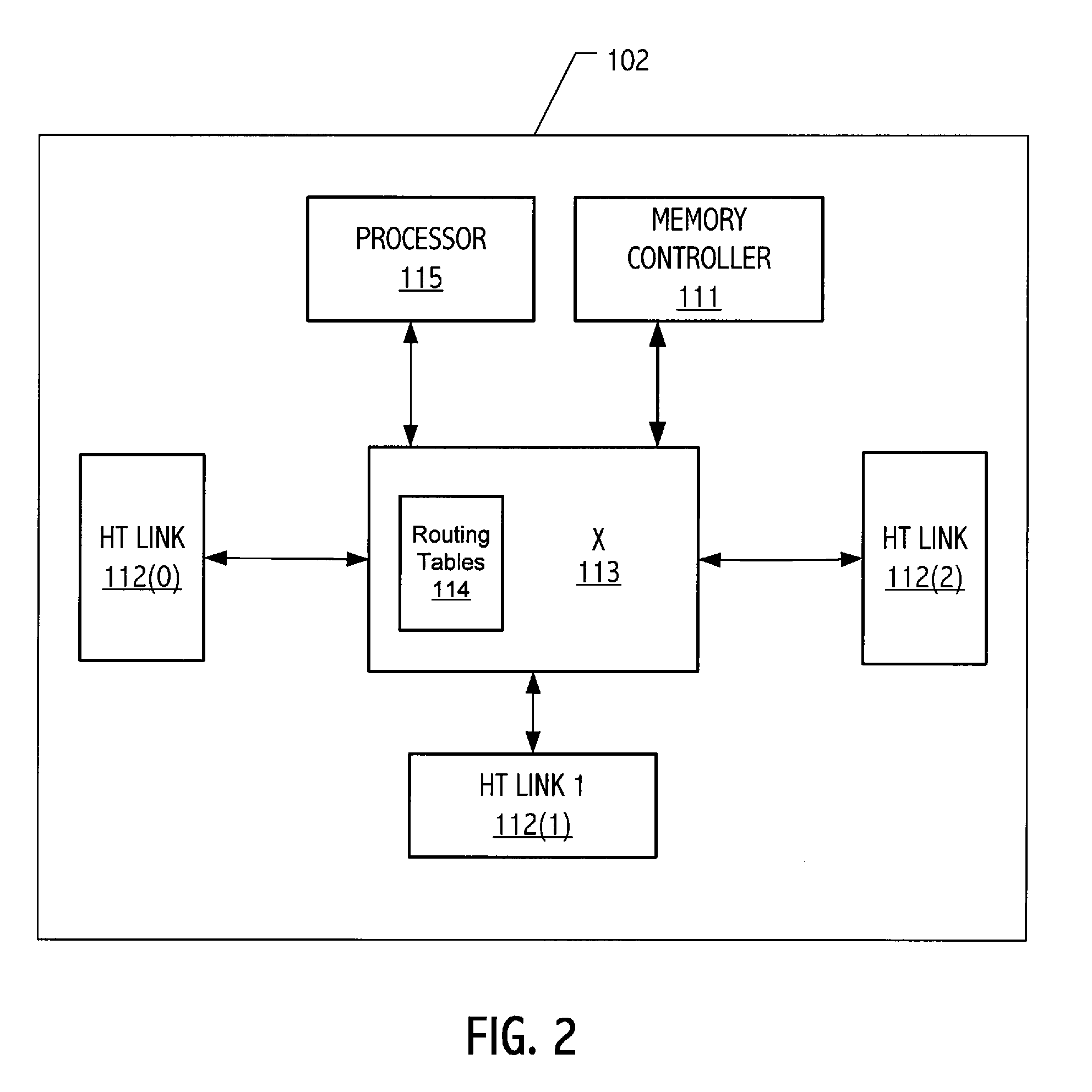Communication network initialization using graph isomorphism
a communication network and graph isomorphism technology, applied in the field of communication networks, can solve problems such as network congestion, system failure, and reduce the flexibility of manufacturers in configuring the topology of their systems, and achieve the effects of reducing effort, improving system flexibility and robustness, and reducing effor
- Summary
- Abstract
- Description
- Claims
- Application Information
AI Technical Summary
Benefits of technology
Problems solved by technology
Method used
Image
Examples
Embodiment Construction
)
[0026]Referring to FIG. 1A an exemplary multiprocessor computer system 100 implementing an embodiment of the invention is illustrated. System 100 is a multiprocessor system with multiple processing nodes 102 (102[0]-102[3]) that communicate with each other via links 103 (103[0]-103[3]). Each of the processing nodes includes a processor, routing tables 114 and additional circuitry not described herein. For purposes of illustration, in the present example, four processing nodes are shown, however one skilled in the art will appreciate that system 100 can include any number of processing nodes connected in different topologies. Links 103 can be any of a number of types of communication links. In the present example, links 103 are dual point to point links according to, for example, a split-transaction bus protocol such as the HyperTransport™ (HT) protocol. Link signals typically include link traffic such as clock, control, command, address and data information and link sideband signal...
PUM
 Login to View More
Login to View More Abstract
Description
Claims
Application Information
 Login to View More
Login to View More - R&D
- Intellectual Property
- Life Sciences
- Materials
- Tech Scout
- Unparalleled Data Quality
- Higher Quality Content
- 60% Fewer Hallucinations
Browse by: Latest US Patents, China's latest patents, Technical Efficacy Thesaurus, Application Domain, Technology Topic, Popular Technical Reports.
© 2025 PatSnap. All rights reserved.Legal|Privacy policy|Modern Slavery Act Transparency Statement|Sitemap|About US| Contact US: help@patsnap.com



